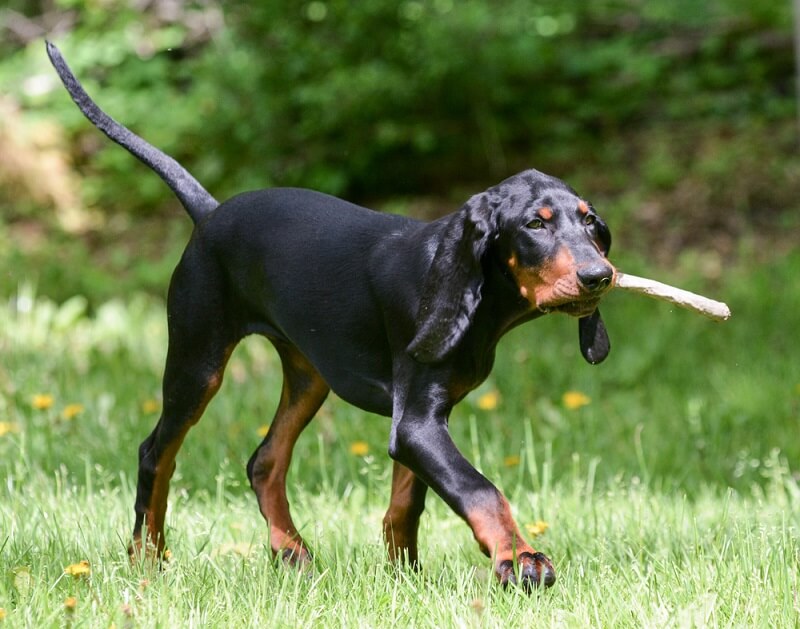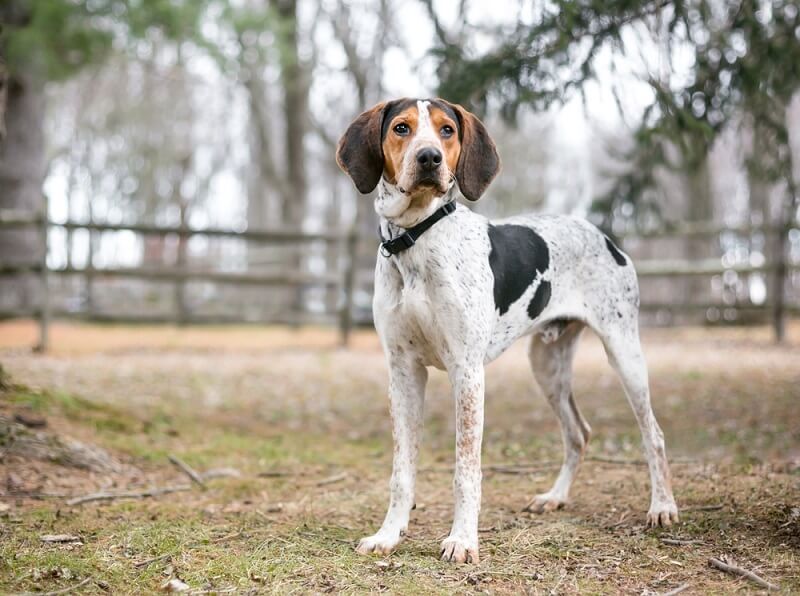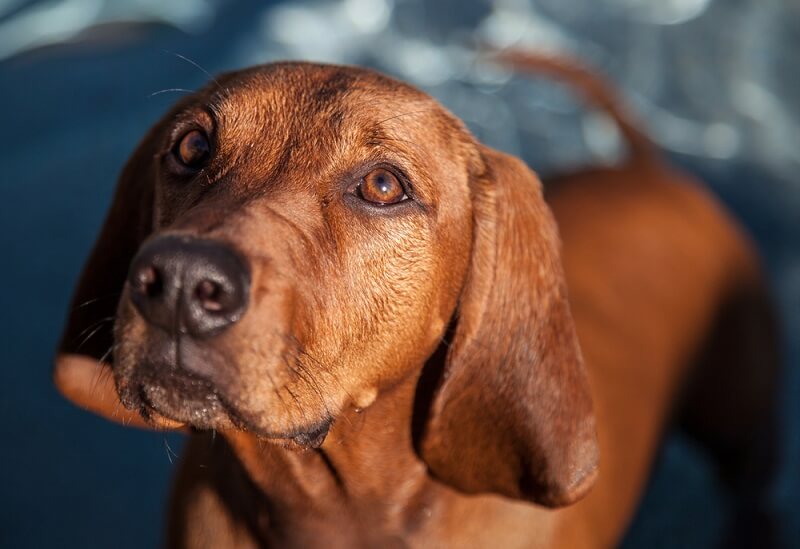
| Kingdom | Animalia |
| Phylum | Chordata |
| Class | Mammalia |
| Order | Carnivora |
| Family | Canidae |
| Genus | Canis |
| Species | Canis familiaris |
| Niche | Domestic Pet |
| Height | 23-27 in (58-68 cm) |
| Weight | 75-100 lbs (34-45 kg) |
| Lifespan | 10-12 years |
| Social Structure | Packs/Domesticated |
| Conservation Status | Least Concern |
| Preferred Habitat | Domestic |
| Average Litter Size | Around 8 puppies |
| Main Prey Species | Dog food |
| Predators | Larger mammals, though as a domestic species coonhounds are protected by their owners |
The Basics
The coonhound is a distinct breed of the domestic dog, Canis familiaris. The coonhound was originally bred as a hunting dog, known for its ability to track raccoons, bears, mountain lions, and other animals. Some coonhounds are also known for their ability to “tree” certain game species by scaring them into a defensive position where they can easily be shot by the hunter. However, coonhounds are now kept as pets by many people, and few are still used as hunting dogs.
Like all dogs, coonhounds are descendants of wolves, Canis lupus. In fact, some scientists still recognize the domestic dog as a subspecies of the wolf and give them the name Canis lupus familiaris. However, over nearly 15,000 years of artificial selection at the hands of breeders, domestic dogs have taken on a wide variety of forms. Coonhounds were selected mainly for their ability to track, hunt, and corner many different animals. As such, coonhounds have one of the most sensitive noses in the animal kingdom.

Coonhounds have amazing olfactory senses and are able to pick up trace scents. As such, coonhounds were prized throughout the 1900s as hunting dogs and the breed was officially recognized by the UKC in 1945. Coonhounds are also used by police departments, the DEA, and other law enforcement agencies to detect drugs, explosives, and other contraband. Since the breed was first recognized, several variations of the breed have also been created.
The 6 Breeds of Coonhound
As of this writing, there are 6 distinct coonhound breeds, which have the following traits:
- Black and Tan Coonhound – the “original” coonhound, with distinct black and tan coloration.
- Redbone – a distinctive red coloration, similar to a rust color
- English – commonly having a tricolor pattern with spots and mottling of white and reds
- Bluetick – Dark black features with white and tan mottling
- Treeing Walker – known for their exceptional ability to corner animals, similar in color to the English coonhound
- Plott Hound – Brindle coat, likely descended from German hunting dogs instead of the foxhound most coonhounds are descended from
Though these breeds are distinct, they are still the same species and can readily interbreed to create new variations. Though these lines are technically descended from different lines, they are all known for their ability to track and chase game animals.
Interesting Insights from the Coonhound!
Though the coonhound and its descendants have been helping humanity survive for thousands of years, most people don’t know how truly amazing the coonhound is. The coonhound displays many biological concepts that can help us better understand biology as a whole!
Heightened Senses through Evolution
The coonhound has been selected for thousands of generations for its nose. Though wolves are already impressive trackers, the coonhound may be even more proficient at picking out minute smells in the environment. In fact, coonhounds are one of the main species used to track and find lost persons, drugs, game animals, and almost any other smell you want them to find. Since coonhounds are naturally proficient at tracking, training them to find the smell you want is as easy as giving them a treat when they correctly identify the item that matches a smell you present to them.

While coonhounds show exemplary olfactory senses, they are really displaying the power of artificial selection. Since artificial selection can be much more focused than natural selection, humans are able to breed animals with almost any traits that they want. Dogs like boxers have been selected for their short noses, dachshunds for their small size, and rottweilers for their intimidating looks. However, artificial selection can easily promote deleterious alleles within a population, leading to genetic diseases that plague entire breeds. For example, while cows have been artificially selected to produce much more milk – they have also lost around 15 years of their previous lifespan.
Social Bonding with Humans
Like all domestic dogs, coonhounds are able to bond with their owners in a way not seen in almost any other domestic species. Part of this is due to the nature of dogs being descended from wolves, and the other part is due to the artificial selective pressures that have selected the friendliest, most receptive, most loyal dogs for thousands of years. In fact, studies have shown that unlike wolves, domestic dogs are able to understand human body language, intonation, and emotions.
Wolves naturally live in packs – a social structure that requires constant communication, is led by an alpha male and female, and has strict requirements for its members. However, some old-fashioned breeders still believe that emulating a wolf-pack is the best way to train a dog. They promote ideas such as “dominance” and “submission” as keys to controlling your dog.

But, this form of training has been shown to be less effective than simple positive reinforcement. Dogs have not been part of wolfpacks for tens of thousands of years, and they have adapted more to human society than the wild packs they came from. As such, dogs are motivated mostly by food and social acceptance. That is why treats, petting, and vocal reinforcement are the best tools for training any dog!
